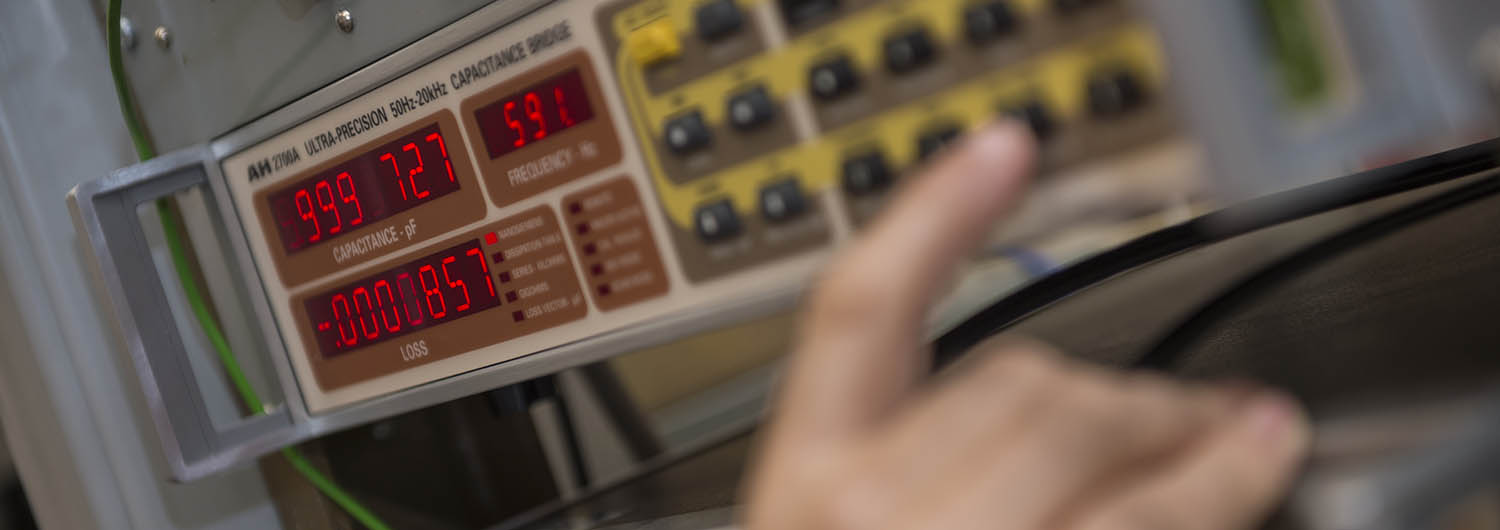Ampere

The Unit – ampere, A (ampere)
The SI unit of electric current, the ampere, is named after André-Marie Ampère, a French physicist and mathematician who was one of the founders of classical electromagnetism.
Ampère’s name was first associated with a unit of current in 1893, but it was in 1948 that the 9th CGPM formally adopted the ampere, A, for the unit of electric current. At the time, it was defined via the force between two infinitely-long parallel conductors, which was a difficult to implement to a high accuracy in a practical way.
Two Nobel Prize-winning discoveries in 1962 and 1980 offered a more reliable approach. In common with most other national metrology institutes, MSL realises the units of voltage and resistance separately using different macroscopic quantum phenomena for each unit. The Josephson Effect links frequency to voltage, so that voltages can be generated that are measurable at the part-per-billion level. For resistance, semiconducting devices designed to exhibit the quantum Hall effect are operated as resistors, with values measurable at the part-per-billion level. With these quantum phenomena, the values of voltage and resistance are linked directly to Planck’s constant, h, and electronic charge, e. The ampere and all other quantities in electricity are ultimately derived from these realisations of voltage and resistance.
In 1990, the CIPM recommended conventional values for the Josephson constant, KJ-90 = h/2e, and the von Klitzing constant, RK-90 = h/e2. Adoption of these values enabled a high level of international consistency in voltage and resistance values that was not previously possible. This recommendation was adopted in anticipation of a wider revision of the SI. In May 2019, this revision was adopted, and let to a new definition of the ampere, expressed only in exact constants:
“The ampere, symbol A, is the SI unit of electric current. It is defined by taking the fixed numerical value of the elementary charge e to be 1.602 176 634 x 10-19 when expressed in the unit C, which is equal to A s, where the second is defined in terms of ΔVCs (the caesium frequency).”
As a result of this change, there have been minor shifts in the values of the Josephson and von Klitzing constants, but no change in how the volt, ohm and ampere are realised. In addition, the magnetic constant, µ0, also known as the permeability of vacuum, is no longer an exact number. Instead, it must be inferred from experimental measures.
Technical Capability
We are leading experts in electrical measurements across a very wide range of activities. We can advise on the best measurements to support your decision making as well as identify and control sources of error in measurement systems. A wide range of calibration services is offered, primarily for laboratory standards of ac and dc current and voltage, resistance, capacitance, inductance, power and energy. We also offer support for businesses making energy measurements in compliance with the Electricity Industry Participation Code.
Research
Continued improvement of measurement capabilities is supported by a range of research activities. Work is being carried out on electron transport in mesoscopic systems for metrology and other applications. This anticipates the adoption of new electrical measurement technologies. Studies are also being carried out into:
- Independent calibration methods for dc current comparators.
- Establishing dc voltage scales up to 1000 V with electronic instruments.
- Characterisation of errors in current transformers based on improved circuit models.
- Josephson systems for sampling ac voltage.
- Digital sampling systems for power measurement.
- Improved methods for determining resistance ratios.
Go to the Electrical Calibration services page.
Watch a short video about the ampere here.(external link)

